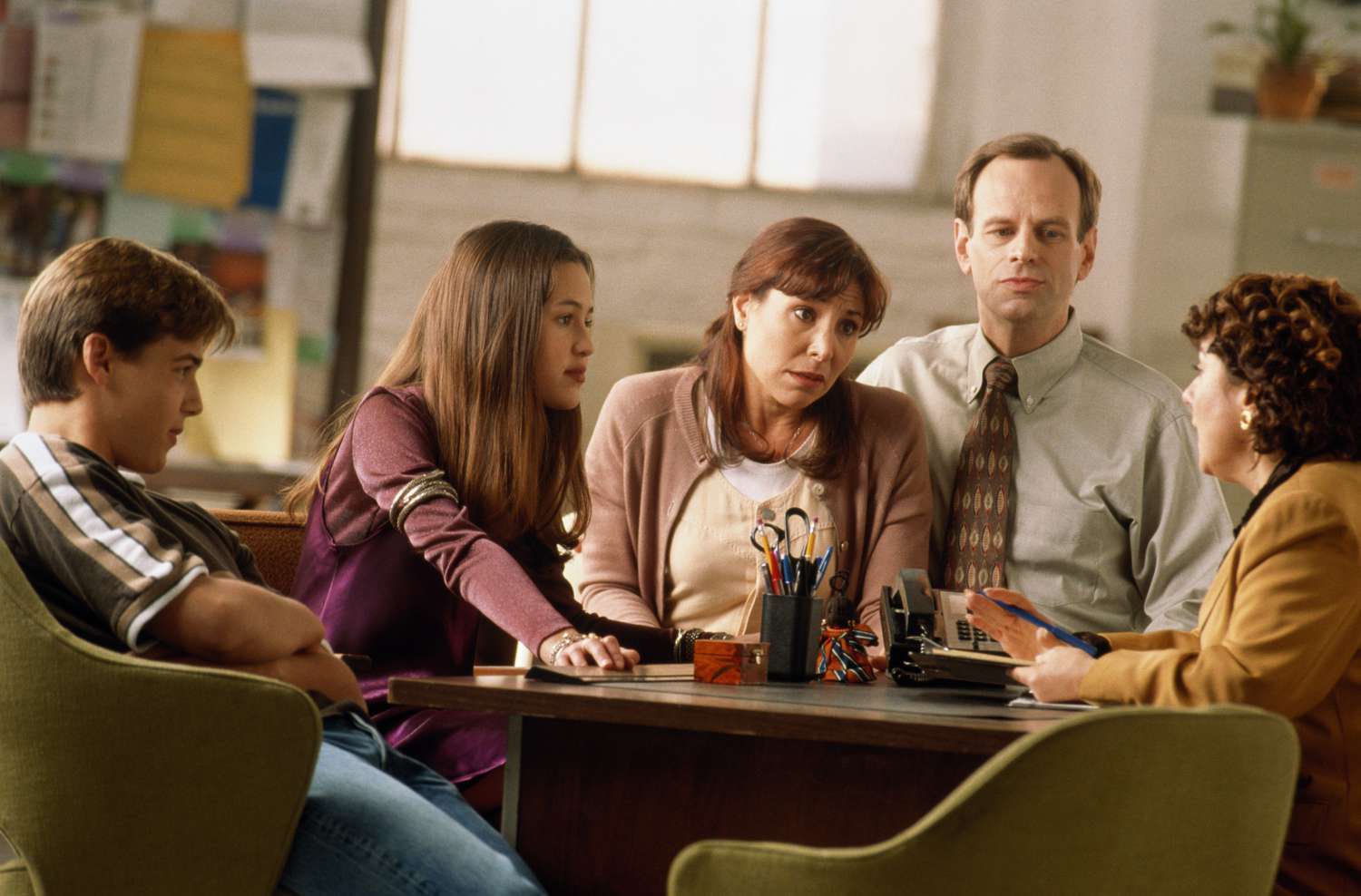What is Marriage and Family Therapy?
A family’s patterns of behavior influences the individual and therefore may need to be a part of the treatment plan. In marriage and family therapy, the unit of treatment isn’t just the person – even if only a single person is interviewed – it is the set of relationships in which the person is embedded.
Marriage and family therapy is:
- brief
- solution-focused
- specific, with attainable therapeutic goals
- designed with the “end in mind.”
Marriage and family therapists treat a wide range of serious clinical problems including: depression, marital problems, anxiety, individual psychological problems, and child-parent problems.
Marriage and family therapists treat a wide range of serious clinical problems including: depression, marital problems, anxiety, individual psychological problems, and child-parent problems.
Research indicates that marriage and family therapy is as effective, and in some cases more effective than standard and/or individual treatments for many mental health problems such as: adult schizophrenia, affective (mood) disorders, adult alcoholism and drug abuse, children’s conduct disorders, adolescent drug abuse, anorexia in young adult women, childhood autism, chronic physical illness in adults and children, and marital distress and conflict.
Marriage and family therapists regularly practice short-term therapy; 12 sessions on average. Nearly 65.6% of the cases are completed within 20 sessions, 87.9% within 50 sessions. Marital/couples therapy (11.5 sessions) and family therapy (9 sessions) both require less time than the average individuated treatment (13 sessions). About half of the treatment provided by marriage and family therapists is one-on-one with the other half divided between marital/couple and family therapy, or a combination of treatments.
Who are Marriage and Family Therapists?
Marriage and family therapists (MFTs) are mental health professionals trained in psychotherapy and family systems, and licensed to diagnose and treat mental and emotional disorders within the context of marriage, couples and family systems.
Marriage and family therapists are a highly experienced group of practitioners, with an average of 13 years of clinical practice in the field of marriage and family therapy. They evaluate and treat mental and emotional disorders, other health and behavioral problems, and address a wide array of relationship issues within the context of the family system.
Marriage and family therapists broaden the traditional emphasis on the individual to attend to the nature and role of individuals in primary relationship networks such as marriage and the family. MFTs take a holistic perspective to health care; they are concerned with the overall, long-term well-being of individuals and their families.
MFTs have graduate training (a Master’s or Doctoral degree) in marriage and family therapy and at least two years of clinical experience. Marriage and family therapists are recognized as a “core” mental health profession, along with psychiatry, psychology, social work and psychiatric nursing.
Since 1970 there has been a 50-fold increase in the number of marriage and family therapists. At any given time they are treating over 1.8 million people.
Why use a Marriage and Family Therapist?
Research studies repeatedly demonstrate the effectiveness of marriage and family therapy in treating the full range of mental and emotional disorders and health problems. Adolescent drug abuse, depression, alcoholism, obesity and dementia in the elderly — as well as marital distress and conflict — are just some of the conditions marriage and family therapists effectively treat.
Studies also show that clients are highly satisfied with services of marriage and family therapists. Clients report marked improvement in work productivity, co-worker relationships, family relationships, partner relationships, emotional health, overall health, social life, and community involvement.
In a recent study, consumers report that marriage and family therapists are the mental health professionals they would most likely recommend to friends. Over 98 percent of clients of marriage and family therapists report therapy services as good or excellent.
After receiving treatment, almost 90% of clients report an improvement in their emotional health, and nearly two-thirds report an improvement in their overall physical health. A majority of clients report an improvement in their functioning at work, and over three-fourths of those receiving marital/couples or family therapy report an improvement in the couple relationship. When a child is the identified patient, parents report that their child’s behavior improved in 73.7% of the cases, their ability to get along with other children significantly improved and there was improved performance in school. Marriage and family therapy’s prominence in the mental health field has increased due to its brief, solution-focused treatment, its family-centered approach, and its demonstrated effectiveness.
Today more than 50,000 marriage and family therapists treat individuals, couples, and families nationwide. Membership in the American Association for Marriage and Family Therapy (AAMFT) has grown from 237 members in 1960 to more than 25,500 in 2015. This growth is a result, in part, of renewed public awareness of the value of family life and concern about the increased stresses on families in a rapidly changing world.
How can I find a Marriage and Family Therapist?
AAMFT Clinical Fellow members meet stringent training and education requirements that qualify them for the independent practice of marriage and family therapy. AAMFT requires Clinical Fellow members to abide by the AAMFT Code of Ethics, the most stringent ethical code in the marriage and family therapy profession. This code delineates specific ethical behavior and guidelines for members to follow to ensure the ethical treatment of clients. Clinical Fellow membership in AAMFT signifies an MFT’s dedication to his or her ongoing professional development. Each month, AAMFT Clinical Fellow members receive important updates on current clinical and research developments in the field, as well as numerous opportunities throughout the year to attend professional development conferences.
Marriage and Family Therapist
What are the qualifications to be a Marriage and Family Therapist?
Marriage and family therapy is a distinct professional discipline with graduate and post graduate programs. Three options are available for those interested in becoming a marriage and family therapist: master’s degree (2-3 years), doctoral program (3-5 years), or post-graduate clinical training programs (3-4 years). Historically, marriage and family therapists have come from a wide variety of educational backgrounds including psychology, psychiatry, social work, nursing, pastoral counseling and education.
The Federal government has designated marriage and family therapy as a core mental health profession along with psychiatry, psychology, social work and psychiatric nursing. Currently all 50 states support and regulate the profession by licensing marriage and family therapists.
The regulatory requirements in most states are substantially equivalent to the American Association of Marriage and Family Therapy’s Clinical Fellow membership standards. After graduation from an accredited program, a period – usually two years – of post-degree supervised clinical experience is necessary before licensure or certification. When the supervision period is completed, the therapist can take a state licensing exam, or the national examination for marriage and family therapists conducted by the Association of Marital and Family Therapy Regulatory Boards (AMFTRB). This exam is used as a licensure requirement in most states.
Couples and families face unique problems, which is why they often seek out help from marriage and family therapists. These professionals are trained to deal specifically with interpersonal issues that arise in individuals, couples, families, and groups.
Professionals who work in this field often use a variety of psychotherapeutic techniques. They may work with individuals, couples, or families to treat illness, improve communication, and strengthen relationships.
What They Do
Marriage and family therapists assess, diagnose and treat mental illness and psychological distress within the context of the marriage and family systems. They may provide premarital counseling, relationship counseling, child counseling, and separation and divorce counseling.
Some of the typical tasks that a marriage and family therapist might perform on a regular basis include:
- Diagnosing and treating mental disorders
- Conducting psychotherapy with individuals, couples, and families
- Developing treatment plans
- Helping clients develop new interpersonal communication skills
- Collecting information about clients through self-report inventories, interviews, observations, discussions, and formal assessments.
If you are considering a career as a marriage and family therapist, it is also important to note that there is more to the job than just conducting therapy. In addition to providing client services, many professionals in the field spend time marketing their services, particularly if they work in private practice.
Completing paperwork and dealing with insurance companies also takes up a significant portion of a therapist’s time. When working with a client, therapists need to maintain accurate case progress notes, keep a record of evaluations, and note any recommendations for further treatment.
Conditions They Treat
Marriage and family therapists treat a wide range of issues and conditions. Some of these include:
- Anger
- Anxiety
- Depression
- Grief
- Relationship problems
- Self-esteem problems
- Self-harm
Marriage and family therapists provide psychotherapy and attend to mental health issues, but they tend to focus more on how family dynamics impact psychological health.
Salaries
As of May 2020, the median annual salary for marriage and family therapists was $51,340. Salaries can vary depending on the sector of employment. According to the Occupational Outlook Handbook, the highest paying industries for this profession include:
- State government: $78,010 (mean annual wage)
- Medical and surgical hospitals: $71,110
- Management: $69,870
- Outpatient care centers: $62,740
- Local government: $62,390
Where They Work
Family therapists work in a range of employment areas including outpatient care centers, individual and family services, local and state governments, and the offices of other healthcare providers. Other common work settings include private practices, inpatient mental health facilities, schools, universities, and health clinics.
Since marriage and family therapists often have to adapt to their clients’ schedules, working evening and weekend hours is not uncommon.
Training and Educational Requirements
The American Association for Marriage and Family Therapy (AAMFT) suggests that the minimum training to become a marriage and family therapist includes a master’s degree plus two years of supervised clinical experience. After completing these educational requirements, therapists must also pass state licensing exams.
In addition to the basic training and educational requirements, it is important for professionals to have the characteristics that will allow them to succeed in the job.
- Interpersonal skills: Compassion and empathy are vital. Marriage and family therapists should be good at listening to their clients.
- Problem-solving abilities: Marriage and family therapists need to be able to deal with complex problems and come up with effective solutions.
- Ability to build trust: Therapists need to help their clients feel able to trust and share their innermost thoughts and feelings.
- Organizational skills: They also need to be able to keep track of case notes and other paperwork and manage billing and insurance claims, which is why organizational abilities are essential.
- Communication skills: Marriage and family therapists also collaborate with others including family members and healthcare professionals, so strong communication skills are a must.
Comfort with different technologies can also be helpful. Marriage and family therapists often use a range of technology tools including video conferencing, accounting software, multi-line telephone systems, spreadsheet software, email, and medical software.
The increased use of online therapy has also made it more important to be comfortable using technology to deliver treatment.
Job Outlook
The Occupational Outlook Handbook projects that the employment of marriage and family therapists will grow by 22% between the years 2019 and 2029, a rate that is much faster than the average for all other occupations.
The growth of the professions is expected to be driven by an increased need for specialists working in integrated care. Integrated care involves the coordination of multiple professionals—including doctors and substance abuse counselors—to address an individual’s mental health needs.
A Word From Verywell
Marriage and family therapists play an important role in mental health. The American Association of Marriage for Marriage and Family Therapy reports that nearly 90% of people who receive marriage and family therapy report improvements in their emotional health. If you are interested in becoming a marriage and family therapist, speak to an academic counselor about your educational options and check the licensure requirements in your state.



